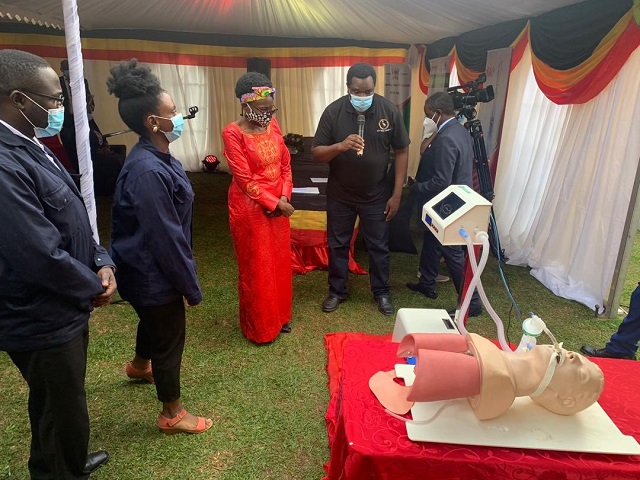
Kampala, Uganda | THE INDEPENDENT | Innovators in Uganda are failing to tap into the market with their technology due to lack of funds.
The innovators are now asking the government to change its approach so that their prototype ideas are transformed into products that can be commercialized into the Ugandan market.
Among the innovators include artists, engineers, artisans, technicians, and technologists who have prototyped products that lie to waste in their homes, offices, and workshops.
Angel Nakalyowa, a final year Environmental Engineering student at Makerere University innovated a board made from straw grass. In her research project, she found that straw grass has a high degree of cellulose which if left to decay in the open releases carbon 60%, but if the straw is turned into a board and is prevented from decaying or being burnt, the carbon gases will not be released into the atmosphere for many years.
She began soliciting funding for her research findings to be adopted and used in Uganda to reduce carbon emissions into the atmosphere in vain.
She requires close to 25,000 US Dollars to make her products available on the market in Uganda.
Phillipa Makobore, Head of Instrumentation in the Technology Development Department at Uganda Industrial Research Institute (UIRI) has developed an Electronically Controlled Gravity Feed Infusion Set (ECGF), an application that helps health care providers to effectively assess a patient presenting with blood and fluid diffusion, to safely discharge the blood and fluids into the body.
She says the challenge is that Uganda’s innovation policies don’t aim to promote indigenous innovators.
“Our mission is to ease the problems caused by uncontrolled blood and fluids in fusion, these include hypoglycemia, glucose overload among others,” said Makobore.
The ECGF is an integrated electronic application for medical conditions like a transfusion of blood, water, glucose, allows health care providers to control amounts of in-fused into patients to avoid damaging human body systems especially among children below 12 years.
She says the challenge is that Uganda’s innovation policies don’t aim to promote indigenous innovators.
Makobore who needed 30,000 US Dollars to improve her innovation and patent before use in the market was frustrated by the lack of systems and structures for innovators in Uganda.
Rachael Atim, former Civil Engineering student at Ndejje University in her project discovered how harmful gasses released to the atmosphere from cement can be reduced in Uganda. In Atim’s study, she found that certain content in cement that absorbs chemicals from the atmosphere like chlorides and sulphates that react with portland cement to cause harmful gases. She has not been taken on by any cement manufacturing company or research organization to better her innovation.
Such innovators would be supported under the Buy Uganda Build Uganda (BUBU) program but they have waited in vain.
David Obong, the Permanent Secretary in the Ministry of Science, Technology, and Innovation said Uganda’s economy can only progress to a middle-income status if the government embraces technology innovation.
There are a lot of scientific innovations buried in Uganda and the Ministry of Science, Technology, and Innovation will support them when they approach us. These are Ugandans who are many and their future relies entirely on the quality of technology that benefits them in terms of skills, funding, and education,” Obong said.
In 2020, the government of Uganda signed a Memorandum of Understanding with partners in science and technology to support digital innovations among small and medium enterprises under the Top 100 Mid-Sized Companies survey 2020.
*****
URN
 The Independent Uganda: You get the Truth we Pay the Price
The Independent Uganda: You get the Truth we Pay the Price




Appreciation to my father who told me about this website,
this weblog is actually amazing.